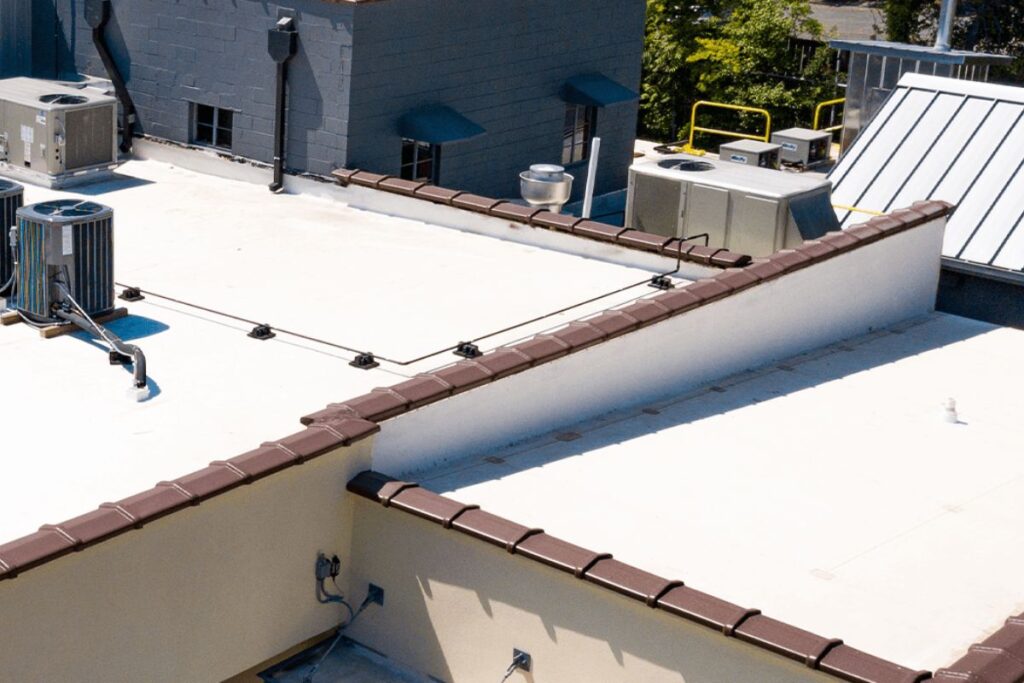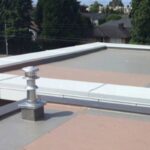Hello friends, If you’re a property owner or business owner looking to install or maintain a flat roof, knowing the different types of roofing materials is extremely important. It helps you make smarter choices, avoid unnecessary expenses, and ensure a longer lifespan for your roof. Commercial properties are a huge investment, and with real estate prices rising across the United States, well-maintained roofs can significantly increase your property’s value.
Let’s break down the basics of flat roof materials and understand what makes each option different. By learning the pros, cons, and costs of each, you can choose what fits your needs best.
Why Roof Materials Matter for Flat Roofs
Flat roofs are different from sloped roofs because water doesn’t run off as easily. That means they must be sealed tight and built to withstand various weather conditions. The roof is one of the most exposed parts of any building. Rain, snow, UV rays, and even foot traffic can damage it over time.
That’s why choosing the right material matters. Not only will it protect your property, but it will also reduce maintenance costs in the long run.
Choosing the Right Material: The “Iron Triangle”
When picking a flat roofing material, think of the “Iron Triangle” — which focuses on these three:
- Lifespan
- Durability
- Cost
You want a roofing material that lasts long, resists damage, and doesn’t break your budget. But remember, the cheapest material may not always be the most durable. It’s all about balancing what matters most to you.
Types of Roofing Materials for Flat Roofs
Let’s take a look at the three major categories of flat roof materials: synthetic membranes, metal roofs, and traditional membranes.
1. Synthetic Roofing Membranes
| Material | Cost per Sq. Ft | Lifespan | Pros | Cons |
|---|---|---|---|---|
| TPO | $5 – $6 | 20-30 years | Fire-retardant, great insulation, UV reflective | Can vary in quality depending on the manufacturer |
| PVC | $6 – $10 | 20-30 years | Extremely durable, supports heavy equipment, UV protection | Expensive |
| EPDM | $0.80 | 20-30 years | Affordable, eco-friendly, easy to install | Prone to punctures, not as strong as TPO or PVC |
TPO (Thermoplastic Olefin)
TPO is popular because it blends the benefits of PVC and EPDM. It resists UV rays, helps with insulation, and is fairly affordable. It’s fire-retardant and can be sealed tightly to prevent leaks.
PVC (Polyvinyl Chloride)
PVC is the toughest of the three. It can handle heavy rooftop equipment and resists weather damage well. It’s more expensive, but ideal for businesses that need a solid roof.
EPDM (Ethylene Propylene Diene Monomer)
Known as rubber roofing, EPDM is budget-friendly and made from recycled materials. It works well if you’re looking for a low-cost solution that still offers decent durability.
2. Metal Roofs
| Material | Cost per Sq. Ft | Lifespan | Pros | Cons |
| Aluminum | $889 – $1,125 | 50+ years | Lightweight, corrosion-resistant, excellent insulation | Very expensive |
| Steel | $12 | Up to 50 years | Durable, strong, good for extreme weather | Noisy in rain, can be heavy |
Aluminum
Aluminum is extremely durable and lightweight. It doesn’t warp, burn, or rust. It’s perfect for harsh climates but is also the most expensive option.
Steel
Steel roofs are a more cost-effective alternative to aluminum. They are tough and long-lasting but can be noisy during storms.
3. Traditional Membranes
| Material | Cost per Sq. Ft | Lifespan | Pros | Cons |
| Modified Bitumen | $0.38 | 20 years | Cost-effective, easy to install | Vulnerable to mold and algae |
| Mastic Asphalt | $2.50 – $4 | 50+ years | Extremely durable, low maintenance | Heavy, needs extra support underneath |
| Tar and Gravel | $4 | 20-40 years | Strong, weather-resistant | Smelly and messy to install, heavy |
Modified Bitumen
This is a low-cost, straightforward roofing option that offers decent waterproofing. However, it’s not the best at resisting mold and algae growth.
Mastic Asphalt
Very strong and long-lasting, asphalt roofs can outperform even metal ones. The only downside is their weight, which requires extra support in your roof structure.
Tar and Gravel
This is the oldest but still a strong choice. It’s made of layers of waterproof material held together with tar and gravel. It lasts a long time, but installation is smelly and not suitable during wet seasons.
Final Thoughts
Hello friends, the roof is one of the most important parts of your commercial property. Choosing the right roofing material helps you save money, reduce repairs, and increase your building’s value.
Here are the key takeaways:
- For affordability: EPDM or Modified Bitumen
- For durability: PVC or Mastic Asphalt
- For long lifespan: Aluminum or Asphalt
Before making a final decision, consult your local roofing contractor. They know which materials work best in your area and can offer reliable installation.
Always remember, the cheapest option today might not be the smartest long-term investment. Make informed choices and your flat roof will serve you well for decades to come.



